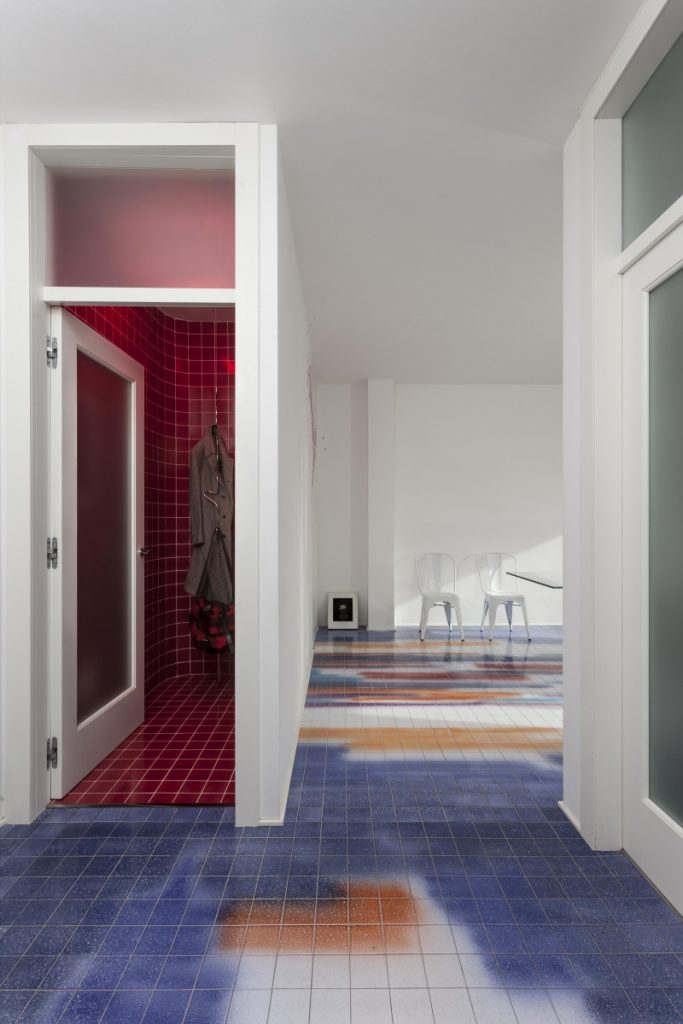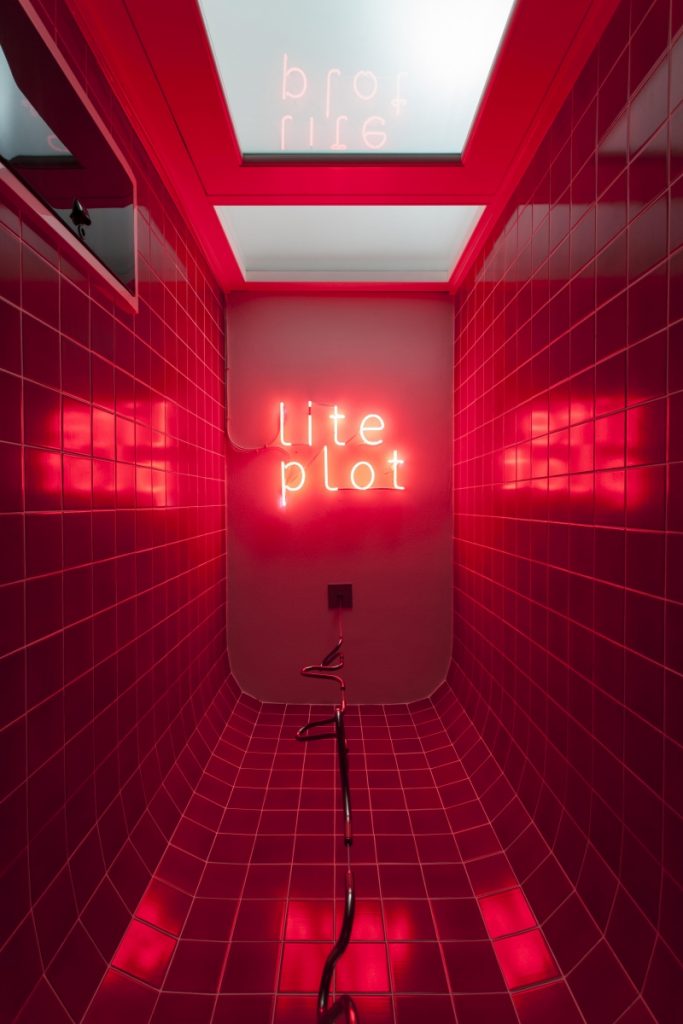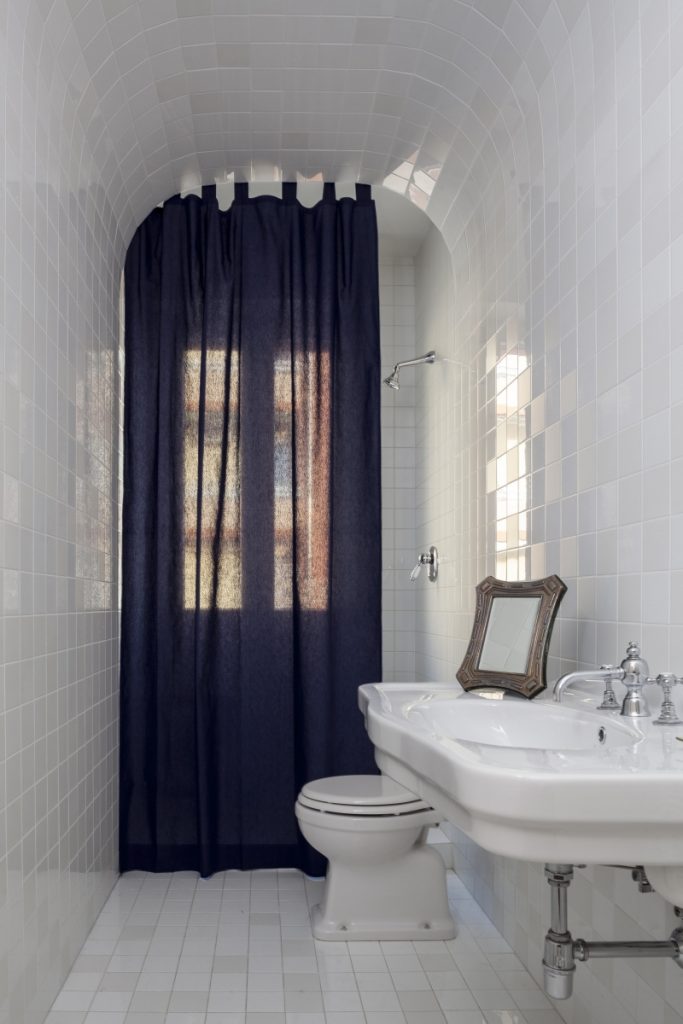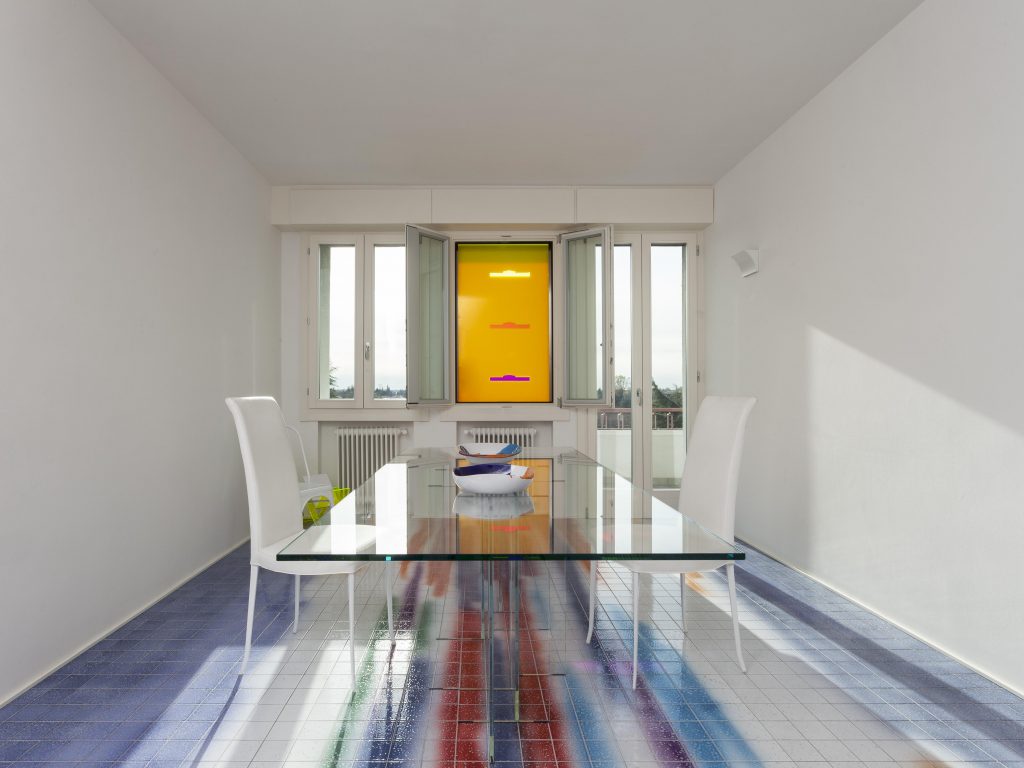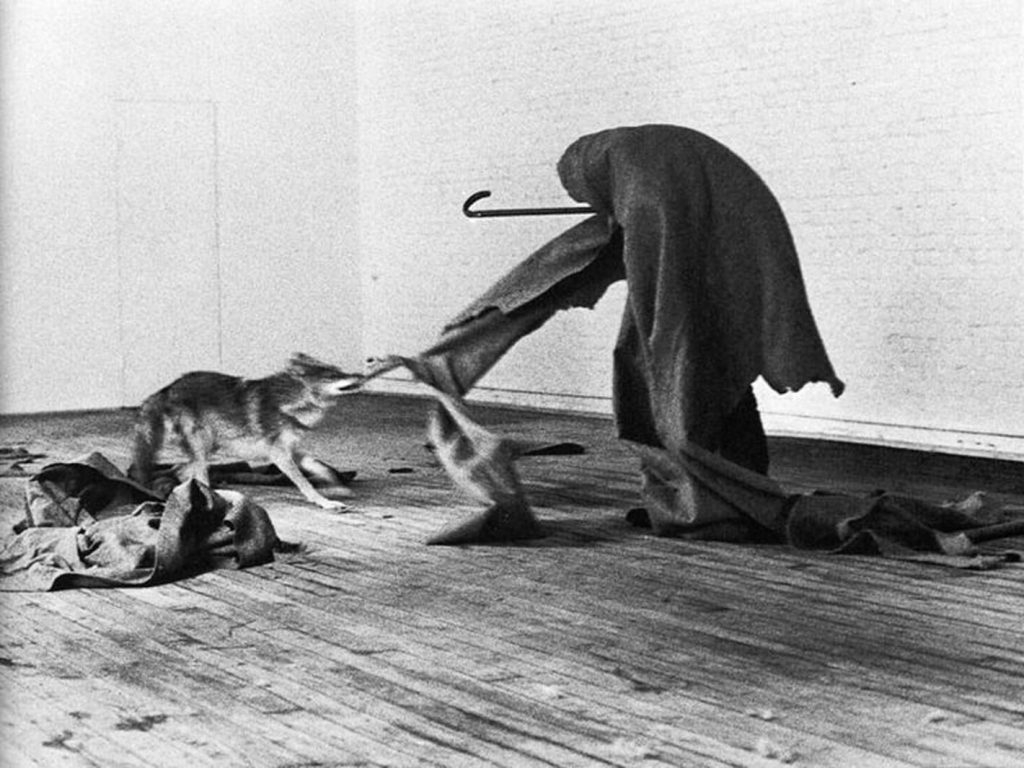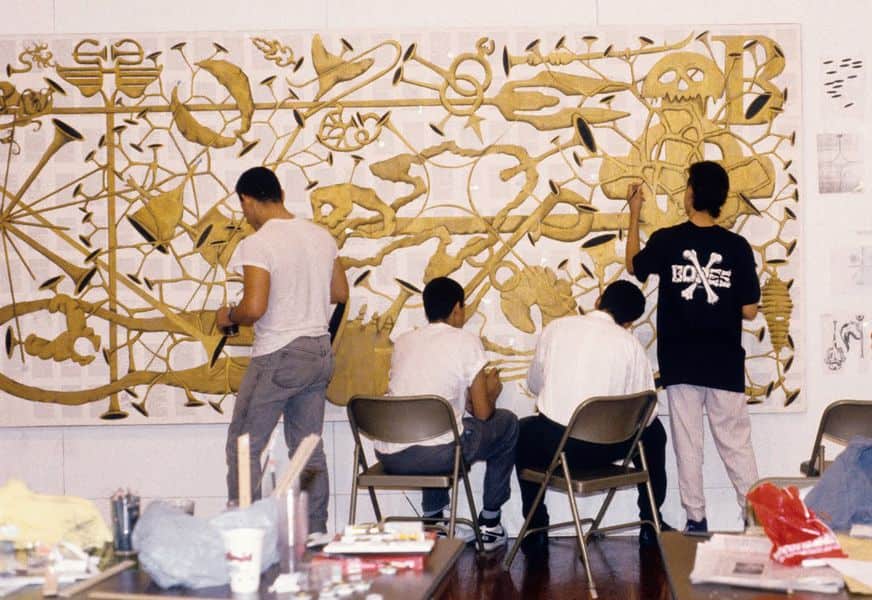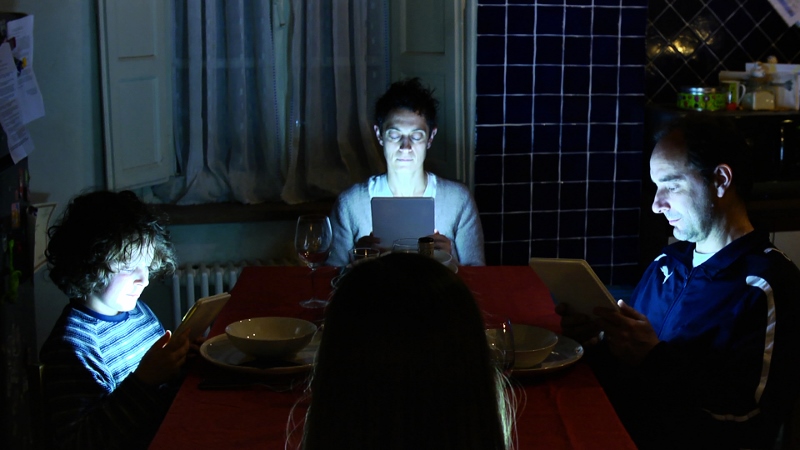Waves come in series of seven. The seventh wave is big enough to be able to drag us out, overcoming the strength of the others.
Thus speaks Papillon, pseudonym of Henri Charrière, a 25-year-old Frenchman, imprisoned and sentenced to forced labor because of a murder he never committed and who tells his story in an autobiographical novel from which will constitute the basis for a forthcoming movie in the early 1970s.
The seventh wave, therefore, represents surprise, rebellion, but also lightheartedness and the unknown. It can be the one that allows you to escape, and therefore freedom, or it can be the one that drags you back to the ground, they destroy any plan, it is that attempt that can potentially overturn everything.
It is from this concept that the project located in the Guizza, a suburban residential neighbourhood of Padua, originates. In one of those anonymous buildings of the 1970s, in fact, there is an interesting place to discover. Settima Onda (seventh wave ndt), in fact, is the name chosen for what is not a simple apartment, but a place of creative experimentation, sociality, interaction and conviviality. In addition to being experienced daily by the owner, a museologist and art curator, in fact, the apartment is open to the public on the most various occasions: for press reviews, presentations, several talks and to admire the numerous site-specific works of art made by different artists.
We could say that we are faced with a very contemporary idea of a house-museum, seen as a place lived daily, where the art becomes perfectly integrated into the everyday routine, and where the boundary between art and architecture is non-existent rather than as a museum that crystallizes over time a collection or a place where someone lived in the past. You could not imagine this apartment without the floor created by the sculptor Pino Castagna, and, in the same way, trying to decontextualize the latter in another place would make the work / installation / architectural element lose all the strength and sense of communication it now has.
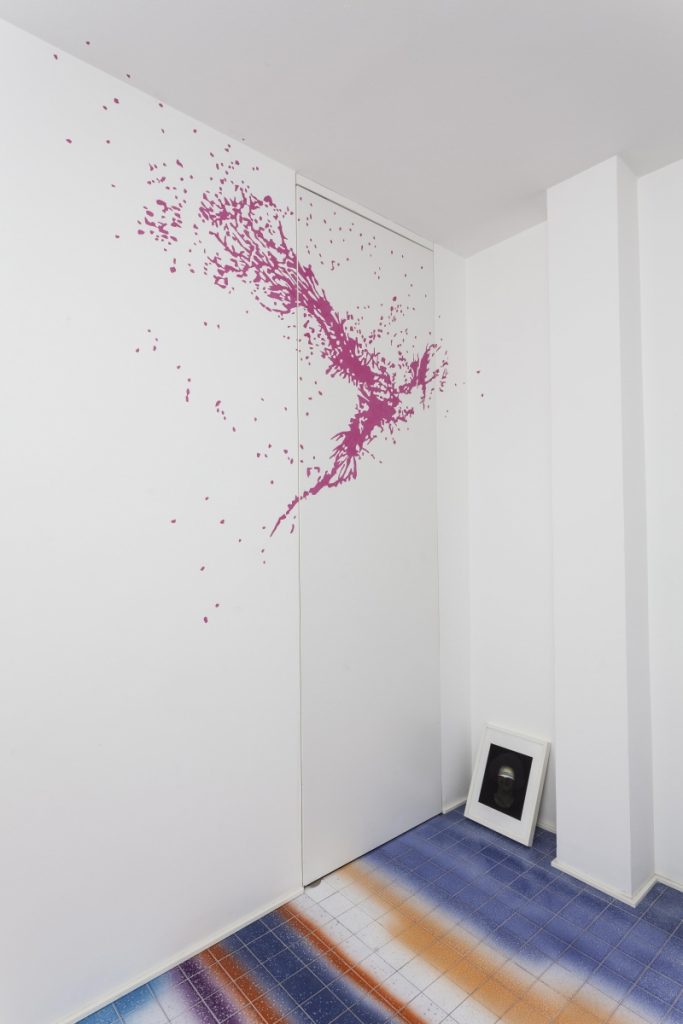
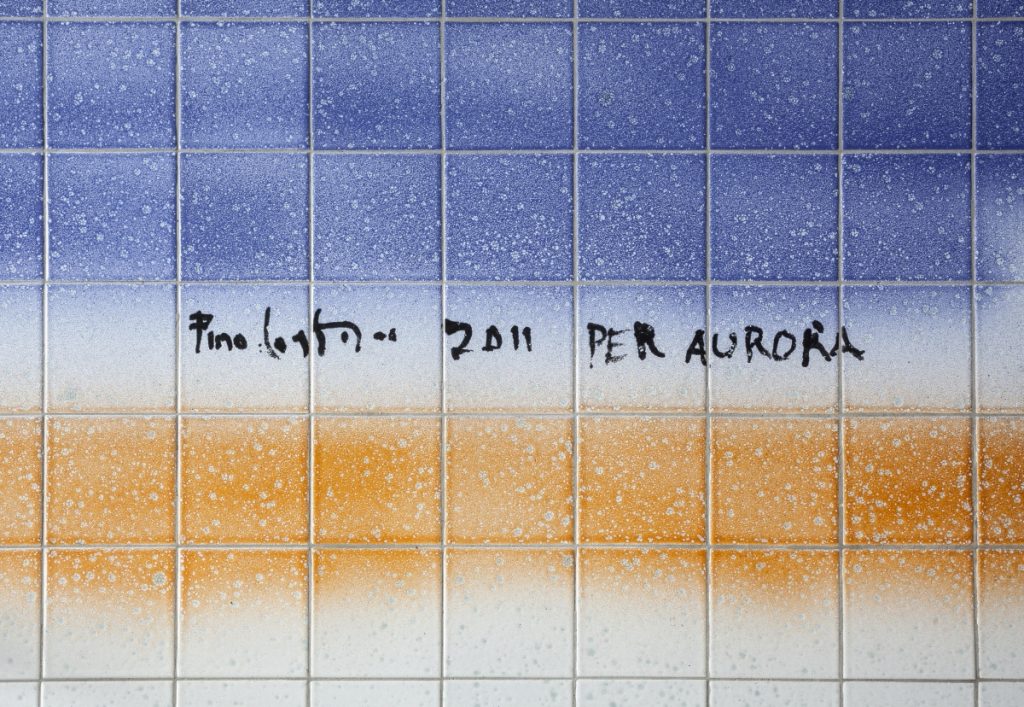
The works therefore are not added elements that complete or decorate an accomplished architecture, but complement the composition of the space in a complementary way. Aurora in time, a plexiglass installation by Francesco Candeloro, in fact, finds its location in the space between the openings of the dining room, creating a direct dialogue with them and with the outside; at the same time, however, it also produces changing light effects on the walls of the room, attracting the attention of those who are there. By doing so, all the elements are united in a single flow where even the apartment lives and interacts with its guests, everything is part of a unique and unrepeatable piece of art.
Involvement and sociability themselves, in fact, give art the possibility to expand more and more, to change according to what happens in an environment that is living rather than only existing for contemplation, and to always add something new to events and meetings. Art becomes a daily gesture, architecture a fact of art and life a performance in continuous evolution, whose characters act in a continuous exchange of roles. The dynamism of the fluorescent wave by Valerio Bevilaqua can be read thanks and in opposition to the static nature of the spatial arrangement of the environment, and the composition of the space allows Arthur Duff’s neon lite plot to be discovered and investigated by the guest / visitor.
This apartment therefore eliminates the boundaries between the roles that exist in a traditional exhibition, takes advantage of the seventh wave to free itself from usual canons by relying on works designed specifically to create a space where everyone can experience art and where that of awe towards something that seems absolutely distant and detached from everyday life is no longer present.
